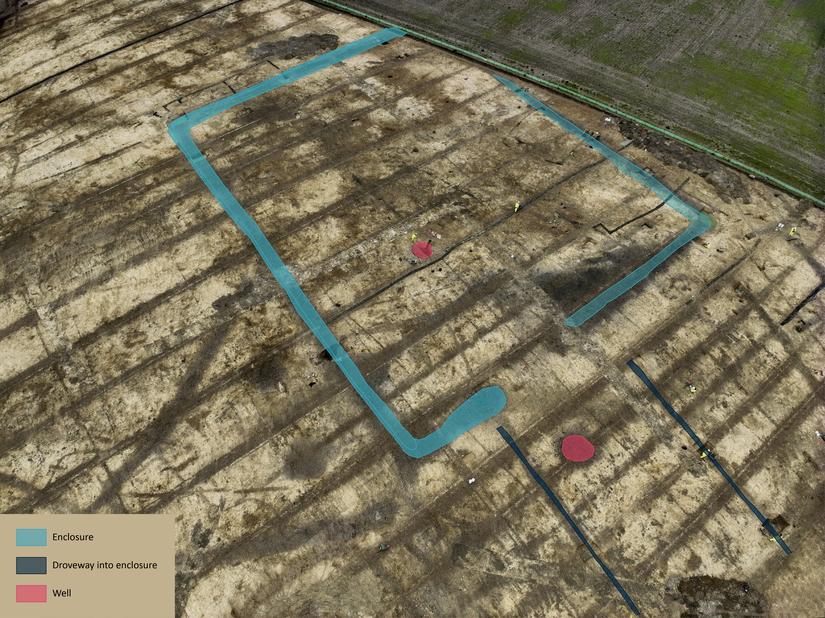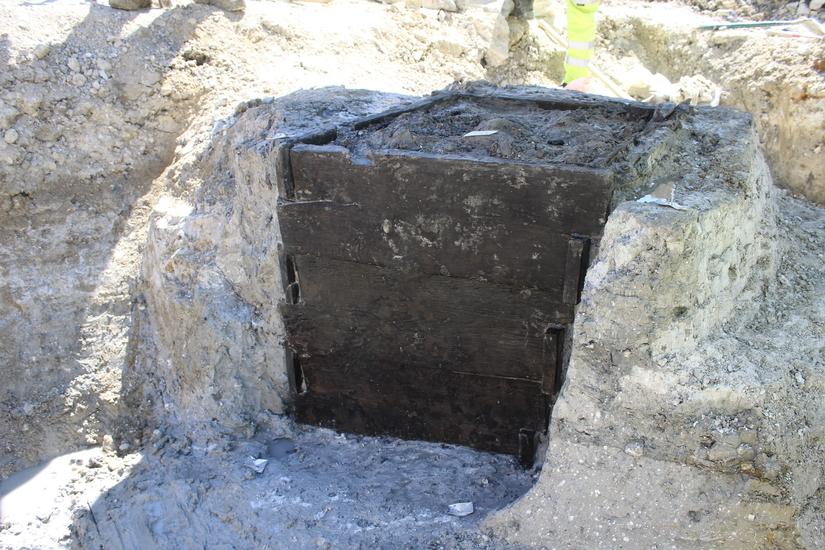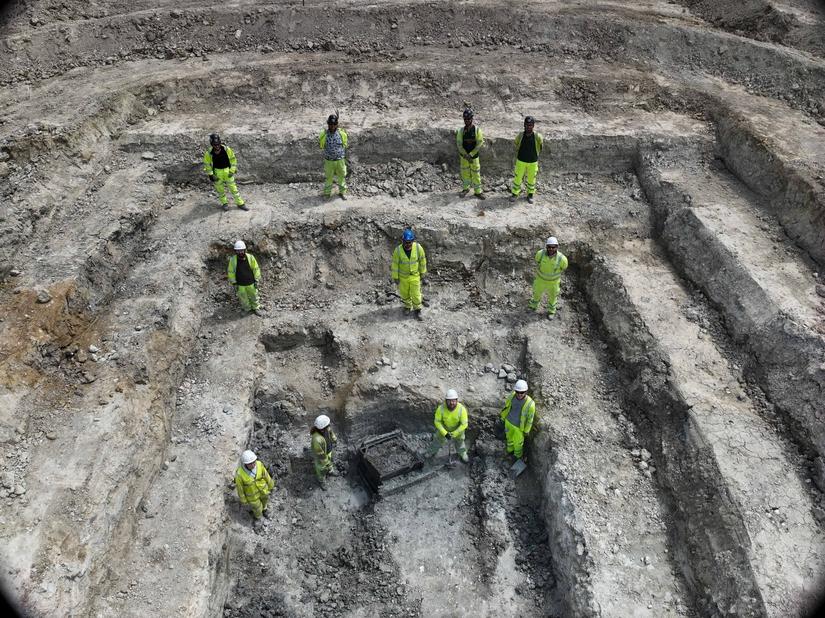Well, well, well – astonishingly preserved wood reveals the trials and errors of Roman engineering
The final few weeks of excavations had one last surprise for our team working on the National Highways A428 Black Cat to Caxton Gibbet improvements in Bedfordshire and Cambridgeshire. We discovered two Roman (AD 43-410) wells, both containing amazingly preserved wooden elements, revealing the secrets of their construction.
The wells were discovered during excavations of a settlement. It began as a quiet farmstead in the Middle Iron Age (around 350 BC) but was transformed into a hive of industrial activity during the early Roman period (AD 43-150). The site has a large, gated, enclosure with evidence of metalworking, carpentry, and woodworking all taking place here during the Roman period. The people living and working at this settlement needed an easy-to-access water supply, so naturally they dug a well.

The first well, just outside the enclosure, was around 8.5 metres deep. That's the same as a two-storey house is high! This was a serious piece of Roman engineering and human endeavor, but sadly not everything went to plan.
MOLA Project Manager Simon Markus explains:
“Despite containing the remains of a wooden ladder, this first well collapsed before they could use it. As we discovered when we first started our excavations here, the clay literally peels away from the more compacted earth and stone. We’ve all done a bit of DIY that hasn’t quite gone to plan, but this was a failure of Roman engineering on an industrial scale. A lot of effort would have gone into digging this well which they then had to completely abandon.”
The settlement’s residents learned from their mistakes. The second well, built inside the enclosure, shows the additional steps they took to prevent another collapse. It was lined with wooden boards to support the wells’ structure and stop it caving in. It was also slightly smaller at 6.5 metres deep.

Simon Markus continues:
“we can sympathise with the original well diggers because excavating these required as much careful design and effort as building them.”
The MOLA team dug out and around the well’s wooden structure, until they eventually revealed the base, covered with stone cobbles to filter the water. Also in the well were sawn off branches, woodchips and off-cuts of planks, dumped by the Romano-British carpenters, after the well went out of use. This wasn’t just locals making items for themselves or doing repairs to their houses. The amount of waste-wood suggests there was a substantial industry here.
The contents of the well will now be carefully studied by specialists. Some of the larger pieces of wood even have decoration, including horizontal lines and crosses, which could offer a clue as to what was being produced here.
While work is ongoing to uncover exactly what the Roman carpenters were making, MOLA archaeologists have found evidence which suggests the workshop was part of a wider trade network. At the very south of the site, the team has identified a likely Roman road. This would have connected the site with major Roman routes, so they could have supplied large settlements such as Godmanchester, and nearby villa rustica (Roman countryside estates).

Follow along with our journey!
#A428BlackCat
Find out more about the A428 National Highways scheme
Excavations are being undertaken by archaeologists from MOLA, as part of the National Highways A428 Black Cat to Caxton Gibbet Improvement Scheme.


